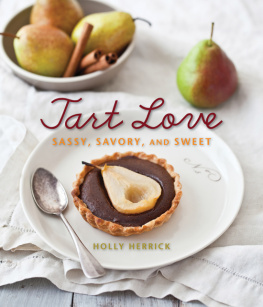
LEGENDARY LOCALS
OF
MCLEAN
VIRGINIA


Mackall Family Tombstones
These two rows of tombstones in the Lewinsville Cemetery mark the graves of Mackall family members. The headstone on the far left identifies Confederate general William Whann Mackall (18171891). The fourth stone to the right belongs to Benjamin Mackall (17901880), the first Mackall to live at Langley. He was taken prisoner from his home by Federal troops during the Civil War. See pages 13, 95, and 96. (Carole Herrick.)
John Roll McLean
John McLean is shown at right with Millicent and Randolph Hearst in 1913. (Library of Congress.)
LEGENDARY LOCALS
OF
MCLEAN
VIRGINIA
CAROLE L. HERRICK

Copyright 2014 by Carole L. Herrick
ISBN 978-1-4671-0190-5
Ebook ISBN 9781439649213
Legendary Locals is an imprint of Arcadia Publishing
Charleston, South Carolina
Library of Congress Control Number: 2014946261
For all general information, please contact Arcadia Publishing:
Telephone 843-853-2070
Fax 843-853-0044
E-mail
For customer service and orders:
Toll-Free 1-888-313-2665
Visit us on the Internet at www.arcadiapublishing.com
Dedication
This book is dedicated to those invaluable individuals whose spirited dedication to their community has enriched the lives of those past and present.
On the Front Cover: Clockwise from top left:
Julia Knauss with children Julia, Annabelle, and Norman Buddy (Sylvia Knauss Sterling; see ).
On the Back Cover: From left to right:
Pat Strawser (Elaine Strawser Cherry; see ).
CONTENTS
ACKNOWLEDGMENTS
The task of tracking down photographs of individuals significant to the history of McLean was a task far more challenging than I envisioned. However, the project was brightened by my acquiring an entirely new array of friends who enthusiastically met the challenge by digging through family albums or contacting family members. This book would have been impossible without their help. Their generosity and assistance proved invaluable. I can honestly say that the time spent on this project was a pleasure, and one of the joys of finishing this book is the opportunity to thank them for helping me through this project. I would like to give a very special thanks of appreciation to the following: Sabrina Anwah, Janet Beall, Don Beyer, Rosetta Rosie Brooks, Don Burns, Wanda Collins, John Dickerson, Sue Dorsey, the DuVal family, Nancy Falck, Peggy Fox, Jan Elvin, John T. Griffith, Don Hakenson, Mary Anne Hampton, Sonja Duffin Hurlbutt, William Kip Laughlin, Barney Lawless III, Suzanne Levy, Douglass Sorrel Mackall III, Roland McElroy, Julie Merrell Harris, Steve McAfee, Elaine McHale, Bill Millhouser, Ann Hennings, Merrily Pierce, Virginia McGavin Rita, Palmer Robeson, Page Shelp, Joan Smith, Zoe Sollenberger, the Stalcup family, Robert Stoy, Barrett Swink, Joan Crosby Tibbetts, Libby Trammel, Anne Morton Vandemark, Dariel Knauss Van Wagoner, Caroline Evans Van Wagoner, Mike Wheat, Laura Wickstead, and N. Lou Wissler.
I also wish to thank the following institutions: Alexandria Library, Special Collections Branch, Chain Bridge Bank, Dolley Madison Library, Fairfax County Park Authority, Fairfax County Police Historical Association, Fairfax County Public Library Virginia Room, Frying Pan Park, Historical Society of Fairfax County, George Mason University, John F. Kennedy Presidential Library and Museum, Lewinsville Presbyterian Church, Library of Congress, McLean Baptist Church, McLean Community Center, McLean Historical Society, McLean Project for the Arts, McLean Volunteer Fire Department, Pleasant Grove Church, and the Virginia Historical Society.
INTRODUCTION
This book is a history of McLean, Virginia, as seen through the lives of a few individuals that helped to make, or continue to make, McLean a vibrant place to live. However, it is a community without a central core, such as a town hall, village square, or even a historic district. McLean simply developed sporadically around a stop of the Great Falls & Old Dominion Railroad (GF&OD), an electrified trolley that ran from Rosslyn to Great Falls Park. There was no plan for the villages growth. From its inception, McLean was a spirited community where everyone got to know each other through civic and community involvement that enriched the lives of residents through socialization and fun. The thread that held the community together was a spirited volunteerism. Community activities were conducted mainly by volunteers. In the beginning, the events centered on the Franklin Sherman School, the McLean Volunteer Fire Department, Storms Store, and the various churches.
McLean began in 1902, when John R. McLean and Sen. Stephen Elkins of West Virginia obtained a charter to operate the GF&OD. This was simply a business venture to promote the scenic beauty of the Great Falls of the Potomac River. The 14-mile line ran between Rosslyn and Great Falls Park and linked with Washington, DC, via the old Aqueduct Bridge. Its rails were laid through forests, farmland, and fruit orchards, bypassing the existing villages of Lewinsville and Langley. The trolley began operating on July 3, 1906, with a trial run to Great Falls Park. Its first scheduled passenger trip was the following day, July 4, 1906.
One of the stops was at Chain Bridge Road, which has been a major transportation artery through Fairfax County since Colonial times. At first, this stop was called Ingleside, after a subdivision that was beginning to develop along Elm Street and Poplar Street (now Beverly Road). However, a hub of activity quickly began to form at that location, and by 1910 residents began calling the Ingleside stop McLean in honor of one of the trolleys founders, who was also the publisher of the Washington Post and Cincinnati Enquirer. Therefore, the next stop on the line to the west became known as Ingleside. In June of 1910, Henry Alonzo Storm took over the operations of a general store that was located at Chain Bridge Road between the tracks and Elm Street, which included the McLean Post Office. In 1911, the Chesterbrook, Lewinsville, and Langley Post Offices were abolished and folded into the existing McLean Post Office. There was no depot. People either purchased their tickets at Storms Store or from a conductor on the train. The day that Storm opened his general store is considered to be the beginning of McLean. There was no celebration. The town was not founded and was never incorporated. It is doubtful that John McLean ever set foot on turf at the stop named after him.
The Great Falls & Old Dominion Railroad significantly affected the Northern Virginia countryside, providing easier transportation to and from the District of Columbia. Farmers found it less difficult to get their crops and dairy products to market. Many businessmen discovered the art of commuting and sought permanent or summer homes for their families in the countryside. Settlements such as Franklin Park and El Nido developed at stops along the route, but the area surrounding the McLean stop underwent the most change; residents, organizations, and businesses wanted to be at that location. An amorphous, village-like settlement began to spread out from the stop in a hodgepodge fashion. For instance, St. Johns Episcopal Church, built in 1877 just east of the Langley Fork, was mounted on casters and hauled across fields to a site on Chain Bridge Road, not far from the McLean stop. The Franklin Sherman School, Fairfax Countys first consolidated public school, opened in 1914 with 29 students, fronting on what was later named Corner Lane. Initial meetings began in 1916 concerning what would ultimately become the McLean Volunteer Fire Department. The department incorporated in 1923 as Station No. 1 in Fairfax County; a two-bay station was built that same year on Chain Bridge Road a block south of the stop. Members of Sharon Lodge 327 built Sharon Masonic Temple at Emerson Avenue and Chain Bridge Road in 1921, and the congregation of the McLean Baptist Church erected its first church in 1923 on Emerson Avenue on property adjacent to the lodge. Before long, there was a civic association, library, and several churches.
Next page






















